Welcome to my new blog on the Western power grid! This site is dedicated to explaining the history, design, and future issues facing the Western Interconnection; the power grid that covers most of Western North America.
Our electrical grid is woefully unprepared for the 21st century. Power demand is growing higher every year due to the installation of heat pumps, electrification of transportation, and buildout of power-hungry data centers. Dirty – but reliable and predictable – generation sources, such as coal, are being retired to meet decarbonization mandates, with no new nuclear, hydro, or natural gas plants to replace this generation. Snowpack is decreasing across the West, reducing the water supply and potential hydroelectric generation for most river basins. Extreme heat waves are increasing in severity and frequency, resulting in more capacity shortage events across the West with inadequate generation to serve load. And wildfires are impacting all aspects of the power system, from causing congestion on the electric grid to necessitating Public Safety Power Shutoffs during periods of extreme fire danger.
The United States does not have a single power grid. Instead, the North American Electric Reliability Corporation (NERC) – the entity responsible for ensuring and enforcing the reliability and security of the bulk North American bulk power system – oversees two major and three minor independent power grids. The major power grids are the Western and Eastern Interconnection, while the minor power grids are the Texas Interconnection, Quebec Interconnection, and Alaska Interconnection. All of these independent grids, or interconnections, operate at a frequency of 60 hertz and are connected to each other by high-voltage DC transmission lines.
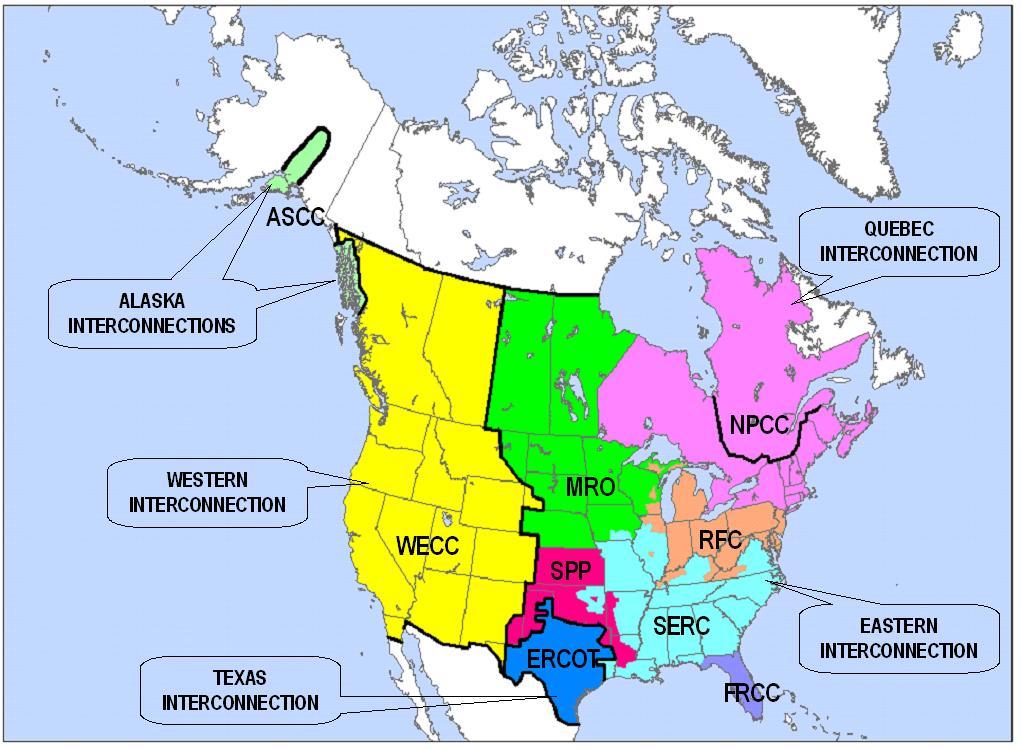
Credit: Wikimedia user Fjbfour
Because each of these grids are relatively self-contained with only a few high-voltage DC transmission lines “interconnecting” them, the grids are limited in the amount of power they can import or export to different interconnections. This is a major issue for smaller interconnections like the Texas Interconnection, also known as the Electric Reliability Council of Texas (ERCOT). This bottleneck was on full display during the winter storm of February 13-17, 2021, which resulted in catastrophic blackouts over Texas due to un-winterized natural gas infrastructure and wind turbines being taken offline by the extreme cold and the inability to import adequate power from neighboring states.
All of these grids face major issues for the 21st century, but the Western grid faces two particularly large ones: (1) inadequate transmission capability and (2) a more decentralized, less efficient organizational structure compared to the Eastern Interconnection.
Inadequate Transmission
First, the transmission grid over the West is laughably inadequate to transmit large amounts of power over large distances. Compare the amount of high voltage transmission lines over the West to the East. It’s pathetic!
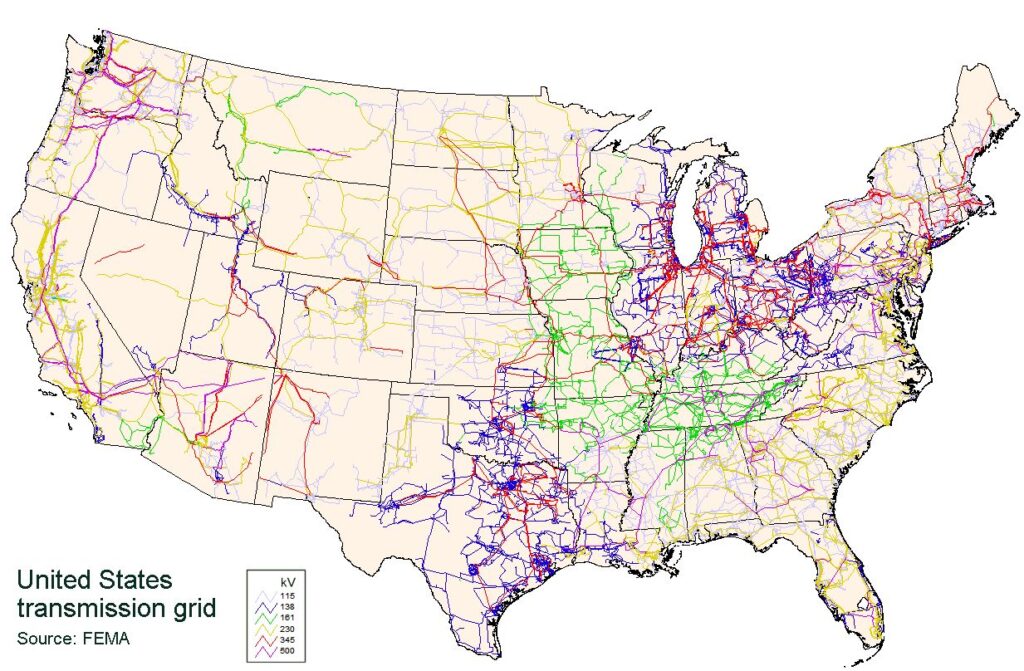
Credit: Wikimedia User Rolypolyman
Most of our modern transmission grid was built during the 50s and 60s, with few modernization updates or new transmission lines built since. When the grid was built, it was designed to transmit power from steady, “baseload” plants such as coal to load centers. With the rapid growth of renewables and decommissioning of baseload plants, we’ve completely changed the paradigm of how we generate and transmit power. Instead of just sending power from a nearby plant to a city, we need to send power from windy/sunny areas to areas of high demand. And much of the time, we simply don’t have enough transmission capacity to get excess wind/solar to the areas that really need it.
For example, look at how much wind Montana receives but how little transmission it has. Moreover, most of this transmission is already being used to deliver power from the Colstrip power plant in SE Montana to the Pacific NW. Because of this, Montana has less wind installed than the Columbia Basin despite a vastly superior wind resource.
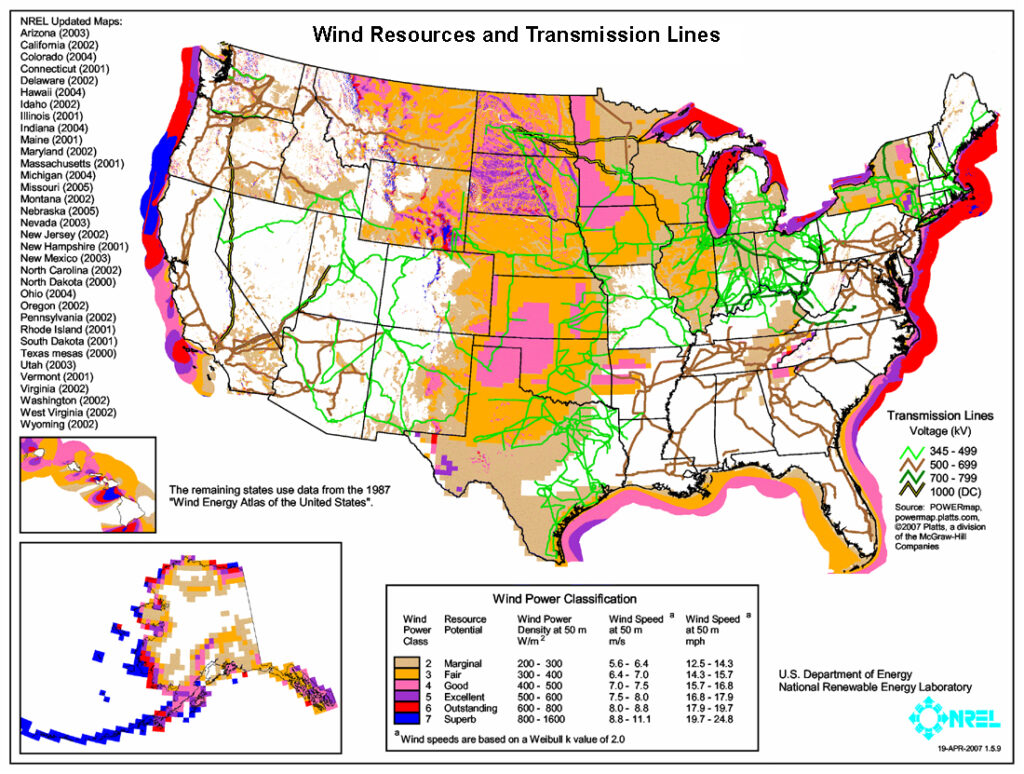
Credit: National Renewable Energy Laboratory
As another example, Southern California often sees negative power prices in the spring during the middle of the day because it has tons of solar generation, little demand to serve, and inadequate transmission to export all of it to neighboring load centers. As a result, solar and wind generation are economically curtailed because it costs money to sell power. In an era where we are trying to decarbonize as fast as humanly possible, throwing away free, clean energy on a daily basis makes me wince!
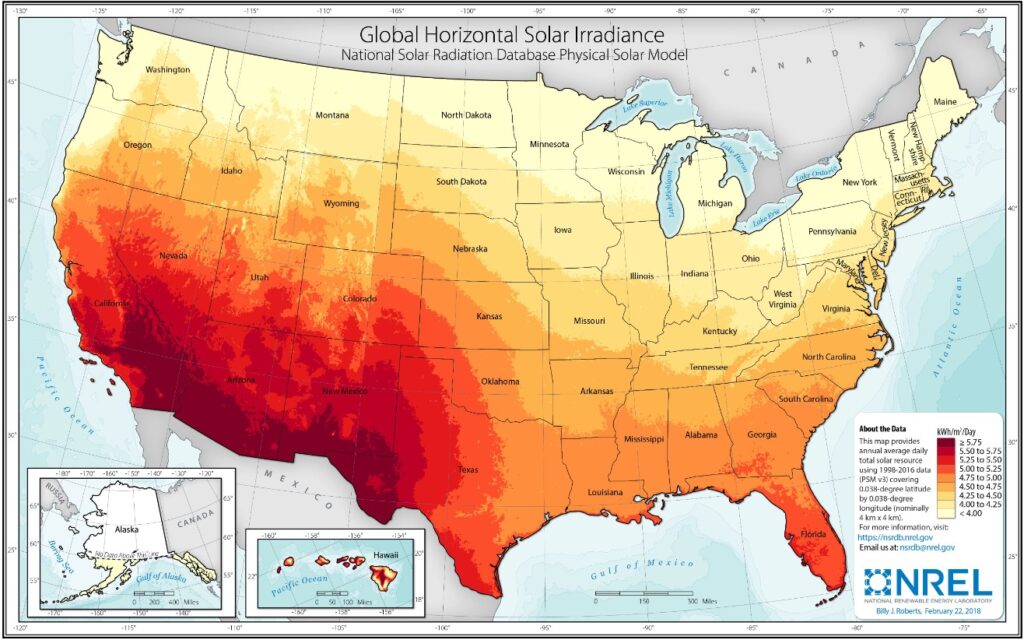
Credit: National Renewable Energy Laboratory
Lack of Market and Transmission Organization
Second, the Western Interconnection has older, less efficient market structures compared to the Eastern Interconnection. Namely, the Eastern US has 5 major “Regional Transmission Organizations” (RTOs), while the Western US only has one. An RTO, also known as an ISO (Independent System Operator) – is a nonprofit entity responsible for operating the power grid and hosting competitive power markets to serve load at lowest cost. Among other things, an RTO facilitates real-time transfers of electricity across its footprint, commits, dispatches, and controls the output of power plants to serve electrical demand, and optimizes transmission to facilitate the transfer of electricity across the system. Each RTO is also its own “balancing authority” and is responsible for maintaining the exact balance of electrical supply and demand within its footprint.
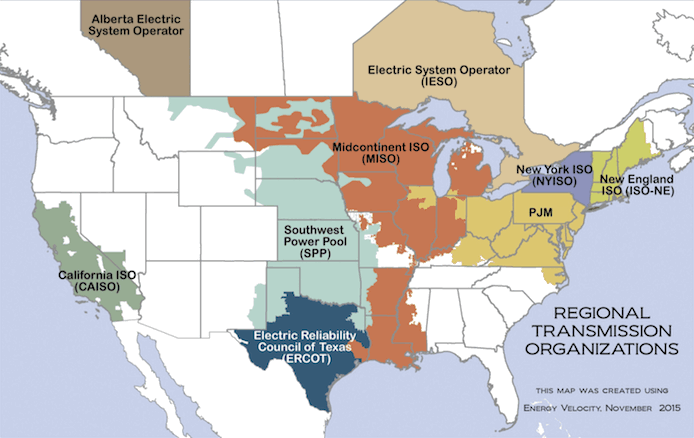
Credit: energyfreedomco.org
In areas where there is not an RTO/ISO, the individual utility is their own balancing authority. They must trade power directly with other counterparties and schedule their own generation instead of having the RTO run daily power auctions and commit certain plants to the market based on the clearing price. This lack of organization generally results in higher power prices on average, as these utilities are not able to efficiently pool together their resources and serve load at lowest cost. Additionally, variable generation such as wind and solar is more likely to be curtailed in single balancing authorities instead of an RTO, as these balancing authorities cannot easily spread wind/solar to other balancing authorities in real-time and instead have to curtail it within their balancing authority to maintain the balance of supply and demand.
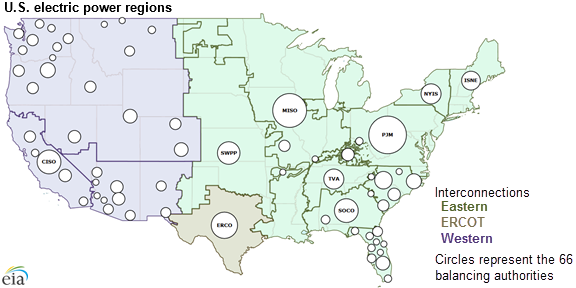
Credit: US Energy Information Administration (EIA)
Note that SPP and CAISO have made available their organized power market functions – but not their balancing authority or transmission system functions – to utilities within the Western Interconnection. CAISO’s is known as the EIM (Energy Imbalance Market), while SPP’s is called Markets+. A full-fledged RTO for the Pacific Northwest will likely form at some point over the 21st century, but it will likely be a slow, incremental process rather than occurring all at once.

Credit: CAISO
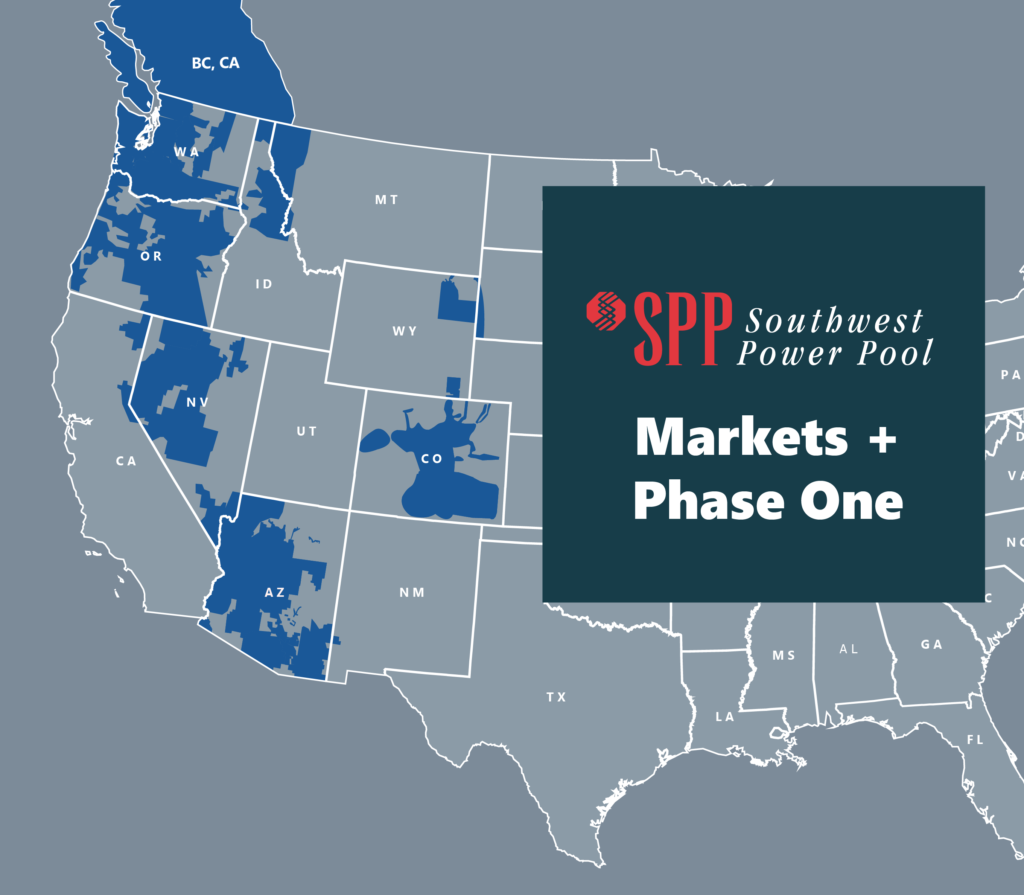
Credit: SPP
Resource Adequacy
One of the major issues facing the Western Interconnection is resource adequacy, which is the concept of having adequate resources to serve load – particularly during extreme load events like heat waves. The combination of load growth from EVs, data centers, and electric heat pumps, the retirement of fossil fuel resources, decreasing snowpack and hydroelectric generation, and more heat waves/extreme load events have led to more ‘capacity shortage’ events across the Western U.S. One such event occurred on August 14-15, 2020, when the California ISO had to issue rotating blackouts for the first time since the California Energy Crisis of 2000-2001. California narrowly avoided rotating blackouts on September 6, 2022 when California measured its all-time record load of 52,061 MW and Sacramento hit 116 degrees. If the “Heat Dome” of June 26-28 2021 was centered just a little further south and hit California and the Desert SW with as much ferocity as the Pacific NW, widespread rotating blackouts would have occurred over much of the Western U.S.
Finally, a little about myself: I’ve worked as a meteorologist and a power trader in the utility sector over the Western U.S. for 7 years, and while I’ve been fascinated by meteorology from a young age, I’ve developed a deep interest in energy markets and policy over the course of my career. It’s impossible to overstate the impact that meteorology has on the energy grid – from power prices, to transmission congestion, to natural gas storage injections, and everything in between. I’ve always been a weather nut, but energy policy – particularly in the midst of decarbonization and climate change – is applied meteorology in its truest form. I hope you enjoy reading this blog as much as I’ll enjoy writing it!
